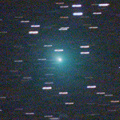
|
Now it is very bright as 5.5 mag (Nov. 22, Marco Goiato). It will approach to Earth down to 0.08 a.u. in December, and it is expected to brighten up to 3 mag. In the Northern Hemisphere, it locates low until November, but it stays observable in excellent condition after December. In the Southern Hemisphere, it is observable in good condition until mid December when it brightens up to 3 mag. But it becomes unobservable after that.
Date(TT) R.A. (2000) Decl. Delta r Elong. m1 Best Time(A, h)
Nov. 24 2 17.23 -27 5.1 0.154 1.086 126 5.4 22:05 ( 0, 28)
Dec. 1 2 33.61 -19 46.4 0.120 1.068 130 4.6 21:54 ( 0, 36)
|
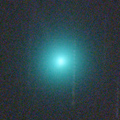
|
New bright comet discovered by three amateur comet hunters. Now it is 8.9 mag (Nov. 20, Osamu Miyazaki). It brightened rapidly from 10 mag up to 8 mag just after the discovery. But after that, the brightness evolution became slow. In the Northern Hemisphere, it can be observable in the extreme low sky until around Nov. 24. It can be observable in the extreme low sky in the evening at 5.5-7 mag from around Dec. 5 to around Dec. 15. In the Southern Hemisphere, it is not observable now. But it will appear in the morning sky at 14 mag in February, then it stays observable in good condition while the comet will be fading gradually.
Date(TT) R.A. (2000) Decl. Delta r Elong. m1 Best Time(A, h)
Nov. 24 14 52.24 -0 57.9 0.691 0.465 25 5.9 5:14 (276, 7)
Dec. 1 16 57.71 -4 11.2 0.706 0.393 19 5.2 18:18 ( 85, -1)
|
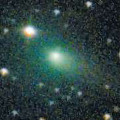
|
Now it is bright as 9.8 mag (Nov. 18, Maik Meyer). It stays 9-10 mag until January. In the Northern Hemisphere, it stays observable in good condition for a long time until it fades out. In the Southern Hemispehre, it is observable in good condition until autumn, but it will be low in winter.
Date(TT) R.A. (2000) Decl. Delta r Elong. m1 Best Time(A, h)
Nov. 24 7 57.50 25 55.6 0.811 1.597 124 9.1 3:47 ( 0, 81)
Dec. 1 8 9.00 28 35.0 0.788 1.609 129 9.1 3:31 ( 0, 83)
|
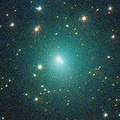
|
Now it is very bright as 9.0 mag (Nov. 16, Maik Meyer). It is observable in excellent condition in the Northern Hemisphere. It stays low in the Southern Hemisphere.
Date(TT) R.A. (2000) Decl. Delta r Elong. m1 Best Time(A, h)
Nov. 24 1 26.90 35 31.4 0.491 1.414 143 9.4 21:15 (180, 89)
Dec. 1 1 42.42 34 33.7 0.519 1.431 141 9.7 21:03 ( 0, 90)
|
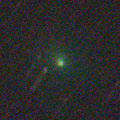
|
Now it is very bright as 10.8 mag (Oct. 12, Paul Camilleri). It stays at 10-11 mag until winter. In the Northern Hemisphere, it stays observable for a long time until it fades out. But it stays extremely low. It will never be observable again in the Southern Hemisphere.
Date(TT) R.A. (2000) Decl. Delta r Elong. m1 Best Time(A, h)
Nov. 24 17 11.81 7 11.5 2.455 1.715 33 10.8 18:18 ( 90, 13)
Dec. 1 17 29.05 9 3.6 2.433 1.712 34 10.8 18:18 ( 93, 12)
|

|
It brightened up to 7.7 mag in June (June 19, Juan Jose Gonzalez). Now it is fading. But it is still bright as 10.7 mag (Nov. 11, Chris Wyatt). In the Southern Hemisphere, it stays observable in good condition for a long time until the comet will fade out. In the Northern Hemisphere, it is not observable for a long time until autumn in 2019 when the comet fades out down to 16 mag.
Date(TT) R.A. (2000) Decl. Delta r Elong. m1 Best Time(A, h)
Nov. 24 15 26.25 -74 48.2 2.961 2.520 54 10.9 5:14 (342,-34)
Dec. 1 15 42.89 -77 3.9 2.982 2.558 55 11.0 5:19 (345,-33)
|
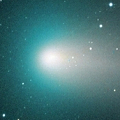
|
It brightened up to 6.8 mag in September (Sept. 17, Seiichi Yoshida). Now it is fading rapidly. It has already faded down to 11.1 mag (Nov. 11, Marco Goiato). It is observable in excellent condition in the Southern Hemisphere. It locates low after this in the Northern Hemisphere.
Date(TT) R.A. (2000) Decl. Delta r Elong. m1 Best Time(A, h)
Nov. 24 7 15.40 -37 29.0 0.814 1.439 105 12.1 3:05 ( 0, 18)
Dec. 1 7 7.40 -38 51.8 0.859 1.502 108 12.6 2:30 ( 0, 16)
|

|
Now it is 11.9 mag (Nov. 3, Seiichi Yoshida). It stays 12 mag for a long time until spring.
Date(TT) R.A. (2000) Decl. Delta r Elong. m1 Best Time(A, h)
Nov. 24 8 33.55 -5 50.8 2.542 2.987 107 12.2 4:23 ( 0, 49)
Dec. 1 8 23.54 -8 24.9 2.473 3.020 114 12.2 3:46 ( 0, 47)
|
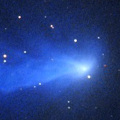
|
Now it is 12.8 mag (Nov. 14, Sandor Szabo). It will be fading slowly after this. In the Northern Hemisphere, it will be getting higher gradually after this, and it will be observable in good condition. In the Southern Hemisphere, it is not observable until summer in 2019.
Date(TT) R.A. (2000) Decl. Delta r Elong. m1 Best Time(A, h)
Nov. 24 14 23.90 41 30.0 3.605 3.321 65 12.5 5:14 (239, 33)
Dec. 1 14 36.57 41 5.2 3.610 3.364 67 12.6 5:19 (241, 36)
|

|
Now it is 13.5 mag (Nov. 1, Paul Camilleri). It stays at 12-13 mag for a long time until autumn in 2019.
Date(TT) R.A. (2000) Decl. Delta r Elong. m1 Best Time(A, h)
Nov. 24 21 54.13 -8 26.1 2.105 2.268 86 13.3 18:18 ( 13, 46)
Dec. 1 22 3.37 -7 59.2 2.164 2.244 81 13.2 18:18 ( 19, 45)
|
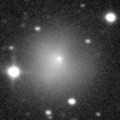
|
Now it is bright as 12.9 mag (Nov. 11, Chris Wyatt). Diffuse.
Date(TT) R.A. (2000) Decl. Delta r Elong. m1 Best Time(A, h)
Nov. 24 22 45.89 -1 0.1 5.497 5.769 101 13.4 18:33 ( 0, 54)
Dec. 1 22 47.31 -0 55.4 5.609 5.769 94 13.5 18:18 ( 4, 54)
|
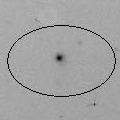
|
Now it is 13.8 mag (Nov. 1, Paul Camilleri). It will brighten up to 10-11 mag in autumn in 2019. It stays observable in good condition for a while in the Southern Hemisphere. In the Northern Hemisphere, it stays extremely low for a long time.
Date(TT) R.A. (2000) Decl. Delta r Elong. m1 Best Time(A, h)
Nov. 24 1 29.41 -43 7.9 4.139 4.542 107 13.7 21:16 ( 0, 12)
Dec. 1 1 22.23 -41 43.6 4.163 4.497 103 13.6 20:41 ( 0, 13)
|
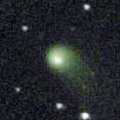
|
Now it is 14.0 mag (Nov. 14, Kunihiro Shima). It stays 13-14 mag until summer in 2019. It is not observable now.
Date(TT) R.A. (2000) Decl. Delta r Elong. m1 Best Time(A, h)
Nov. 24 16 45.34 -3 15.7 4.198 3.294 20 14.3 18:18 ( 85, 1)
Dec. 1 16 49.81 -4 41.8 4.209 3.284 17 14.3 18:18 ( 87, -4)
|

|
Now it is 14.0 mag (Nov. 3, Seiichi Yoshida). It stays at 14 mag until winter. It is observable in excellent condition in the Northern Hemisphere. In the Southern Hemisphere, it is not observable until summer in 2019.
Date(TT) R.A. (2000) Decl. Delta r Elong. m1 Best Time(A, h)
Nov. 24 10 55.57 75 51.2 1.448 1.968 106 14.3 5:14 (188, 48)
Dec. 1 11 36.43 76 34.4 1.450 1.980 107 14.3 5:19 (188, 47)
|
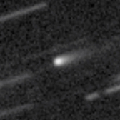
|
Now it is 14.8 mag (Nov. 10, Toshihiko Ikemura, Hirohisa Sato). Brightening very rapidly. It is observable at 14 mag in excellent condition until March.
Date(TT) R.A. (2000) Decl. Delta r Elong. m1 Best Time(A, h)
Nov. 24 10 10.00 9 9.9 1.296 1.632 90 14.5 5:14 (335, 62)
Dec. 1 10 25.08 7 19.3 1.240 1.626 93 14.4 5:19 (346, 62)
|
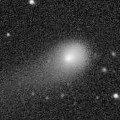
|
Now it is 13.5 mag (Nov. 14, Sandor Szabo). It will be observable at 13-14 mag for a long time from 2017 to 2018. It is observable in excellent condition until spring in the Northern Hemispehre. In the Southern Hemisphere, it will be hardly observable after this.
Date(TT) R.A. (2000) Decl. Delta r Elong. m1 Best Time(A, h)
Nov. 24 11 59.47 35 31.2 4.530 4.454 79 14.4 5:14 (258, 58)
Dec. 1 11 57.45 36 3.0 4.448 4.487 85 14.4 5:19 (259, 66)
|
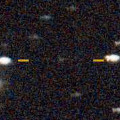
|
Now it is 16.3 mag (Nov. 14, Kunihiro Shima). It will brighten up to 13-14 mag in winter, and it will be observable in excellent condition. It locates low in the Southern Hemisphere.
Date(TT) R.A. (2000) Decl. Delta r Elong. m1 Best Time(A, h)
Nov. 24 10 32.11 27 32.2 1.935 2.203 91 15.1 5:14 (293, 74)
Dec. 1 10 43.90 27 23.1 1.850 2.189 96 15.0 5:19 (305, 77)
|

|
Now it is 14.5 mag (Aug. 16, P. Camilleri, H. Williams). It stays 15 mag from 2018 to 2019, and it will be observable for a long time in the Southern Hemisphere. In the Northern Hemisphere, it will never be observable again.
Date(TT) R.A. (2000) Decl. Delta r Elong. m1 Best Time(A, h)
Nov. 24 17 27.56 -68 33.6 4.529 3.969 50 15.0 18:18 ( 23,-27)
Dec. 1 17 54.77 -68 18.0 4.543 3.960 48 15.0 18:18 ( 24,-27)
|
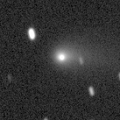
|
Now it is 13.9 mag (Nov. 8, Chris Wyatt). It will be fading after this. It stays observable in excellent condition for a while in the Southern Hemisphere. It locates somewhat low in the Northern Hemisphere.
Date(TT) R.A. (2000) Decl. Delta r Elong. m1 Best Time(A, h)
Nov. 24 23 8.59 -21 12.7 1.789 2.162 98 15.0 18:56 ( 0, 34)
Dec. 1 23 17.53 -19 46.0 1.883 2.183 93 15.2 18:38 ( 0, 35)
|

|
Now it is 15.4 mag (Oct. 7, iTelescope Observatory, Siding Spring). It locates low. But it brightens up to 14.5 mag from October to November.
Date(TT) R.A. (2000) Decl. Delta r Elong. m1 Best Time(A, h)
Nov. 24 19 44.29 -26 4.5 1.057 0.900 52 15.1 18:18 ( 38, 18)
Dec. 1 20 29.48 -24 18.2 1.043 0.945 55 15.5 18:18 ( 36, 22)
|
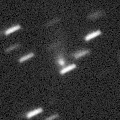
|
It brightened up to 8.7 mag in July (July 18, Marco Goiato). Then it faded down to 12.3 mag in August (Aug. 29, Chris Wyatt). Now it is not observable. It will appear in the morning sky in late December.
Date(TT) R.A. (2000) Decl. Delta r Elong. m1 Best Time(A, h)
Nov. 24 15 18.12 -23 45.2 3.220 2.252 9 15.1 5:14 (291,-12)
Dec. 1 15 27.81 -23 12.1 3.288 2.342 13 15.3 5:19 (293, -7)
|
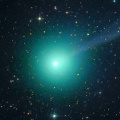
|
It brightened rapidly in outburst up to 6.9 mag (July 19, Maik Meyer). Then it faded down to 9.3 mag (Aug. 2, Katsumi Yoshimoto). It approached to Sun down to 0.2 a.u. in August, and it was expected to brighten up to 3 mag. However, it must have been already disintegrated. It appeared in the morning sky. But nobody could detect the comet except for Juan Jose Gonzalez. Juan Jose Gonzalez reported he detected the remnant visually at around 10 mag between Oct. 16 and Nov. 16.
Date(TT) R.A. (2000) Decl. Delta r Elong. m1 Best Time(A, h)
Nov. 24 13 33.46 25 55.8 2.537 2.181 57 15.4 5:14 (262, 36)
Dec. 1 13 41.39 27 43.0 2.551 2.290 63 15.6 5:19 (263, 42)
|
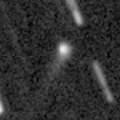
|
Now it is 15.2 mag (Nov. 10, Kunihiro Shima). It will brighten up to 15 mag in winter. It is observable in excellent condition in the Northern Hemisphere. It is not observable at all in the Southern Hemisphere.
Date(TT) R.A. (2000) Decl. Delta r Elong. m1 Best Time(A, h)
Nov. 24 11 18.99 51 5.1 3.096 3.311 93 15.7 5:14 (224, 64)
Dec. 1 11 16.88 54 4.5 2.977 3.302 100 15.6 5:19 (210, 67)
|
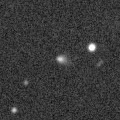
|
Now it is 15.4 mag (Nov. 14, Kunihiro Shima). It is expected to brighten up to 7-8 mag in 2020. In 2018, it will be observable at 15-16 mag in good condition from autum to winter.
Date(TT) R.A. (2000) Decl. Delta r Elong. m1 Best Time(A, h)
Nov. 24 3 29.47 -5 58.4 5.090 5.985 152 15.8 23:16 ( 0, 49)
Dec. 1 3 24.71 -5 49.8 5.062 5.925 148 15.7 22:43 ( 0, 49)
|
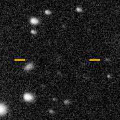
|
Now it is 17.2 mag (Nov. 14, Kunihiro Shima). It is observable at 16.5 mag in good condition from autumn to winter. But it is fainter than this ephemeris recently. It locates somewhat low in the Southern Hemisphere.
Date(TT) R.A. (2000) Decl. Delta r Elong. m1 Best Time(A, h)
Nov. 24 8 33.87 25 12.5 1.806 2.416 116 16.5 4:24 ( 0, 80)
Dec. 1 8 36.29 24 52.7 1.744 2.428 123 16.5 3:58 ( 0, 80)
|
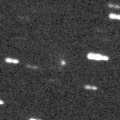
|
It stays 15 mag for a long time in 2019. In the Southern Hemisphere, it is observable in excellent condition. In the Northern Hemisphere, it is observable in low sky until early January, but it will be unobservable after that.
Date(TT) R.A. (2000) Decl. Delta r Elong. m1 Best Time(A, h)
Nov. 24 11 25.93 -27 53.3 3.996 3.631 61 16.6 5:14 (331, 21)
Dec. 1 11 28.16 -30 7.0 3.875 3.598 66 16.5 5:19 (339, 21)
|
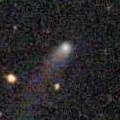
|
It brightened up to 14.7 mag in early 2018 (Jan. 25, Catalina Sky Survey). Now it is fading slowly. Now it is 16.6 mag (Nov. 15, Toshihiko Ikemura, Hirohisa Sato). In the Northern Hemisphere, it stays observable in good condition for a long time until the comet fades out. It is never observable again in the Southern Hemisphere.
Date(TT) R.A. (2000) Decl. Delta r Elong. m1 Best Time(A, h)
Nov. 24 8 2.05 66 46.9 5.419 5.973 119 16.5 3:53 (180, 58)
Dec. 1 7 50.84 68 15.8 5.387 5.996 124 16.5 3:14 (180, 57)
|

|
Now it is 17.0 mag (Oct. 12, D. Buczynski). It stays 16-17 mag for a long time until 2020. It is observable in good condition in the Northern Hemisphere. It is not observable at all in the Southern Hemisphere.
Date(TT) R.A. (2000) Decl. Delta r Elong. m1 Best Time(A, h)
Nov. 24 11 35.86 68 58.0 8.225 8.464 100 16.7 5:14 (198, 52)
Dec. 1 11 41.86 69 22.2 8.169 8.461 103 16.7 5:19 (195, 53)
|
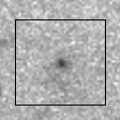
|
Now it is 17.2 mag (Nov. 14, Toshihiko Ikemura, Hirohisa Sato). It will brighten rapidly. It was expected to be observable at 15.5 mag in good condition in winter. But it is somewhat fainter than expected.
Date(TT) R.A. (2000) Decl. Delta r Elong. m1 Best Time(A, h)
Nov. 24 4 51.45 -5 35.5 0.905 1.831 150 16.9 0:42 ( 0, 49)
Dec. 1 4 45.71 -4 4.5 0.879 1.817 153 16.7 0:09 ( 0, 51)
|

|
It brightened up to 7 mag from May to June in 2017. Now it is fading. It has already faded down to 16.0 mag (Sept. 30, J. Drummond). In the Southern Hemisphere, it stays observable for a long time after this. It will never be observable again in the Northern Hemisphere.
Date(TT) R.A. (2000) Decl. Delta r Elong. m1 Best Time(A, h)
Nov. 24 0 54.71 -51 27.2 5.781 5.995 97 16.8 20:41 ( 0, 4)
Dec. 1 0 52.41 -50 32.6 5.911 6.055 93 16.9 20:12 ( 0, 5)
|

|
Now it is 17.6 mag (Nov. 11, Toshihiko Ikemura, Hirohisa Sato). It is observable in good condition in the Southern Hemisphere. It locates somewhat low in the Northern Hemisphere.
Date(TT) R.A. (2000) Decl. Delta r Elong. m1 Best Time(A, h)
Nov. 24 22 53.13 -17 1.7 3.215 3.469 96 17.0 18:41 ( 0, 38)
Dec. 1 22 56.68 -16 17.3 3.331 3.485 90 17.1 18:18 ( 0, 39)
|
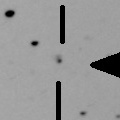
|
Asteroid, but it brightened rapidly. Now it is 17.3 mag (Nov. 14, Kunihiro Shima).
Date(TT) R.A. (2000) Decl. Delta r Elong. m1 Best Time(A, h)
Nov. 24 22 14.46 -43 45.8 6.830 6.713 79 17.0 18:18 ( 3, 11)
Dec. 1 22 11.83 -43 10.6 6.926 6.699 72 17.0 18:18 ( 9, 11)
|
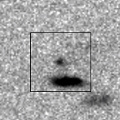
|
Now it is 17.5 mag (Oct. 10, D. Buczynski). It is observable at 17 mag in good condition in winter. It locates low in the Southern Hemisphere.
Date(TT) R.A. (2000) Decl. Delta r Elong. m1 Best Time(A, h)
Nov. 24 10 51.48 20 7.4 2.200 2.332 85 17.0 5:14 (302, 66)
Dec. 1 10 59.41 20 20.7 2.151 2.372 90 17.0 5:19 (313, 70)
|
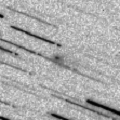
|
First return of a new periodic comet which brightened up to 17.5 mag in 2010. Now it is 17.2 mag (Nov. 14, Toshihiko Ikemura, Hirohisa Sato). It was expected to brighten up to 16.5 mag from November to December. But actually, it is a bit fainter than expected. It is observable in excellent condition in the Northern Hemisphere. It locates low in the Southern Hemisphere.
Date(TT) R.A. (2000) Decl. Delta r Elong. m1 Best Time(A, h)
Nov. 24 6 14.15 33 5.9 1.088 1.991 147 17.2 2:04 ( 0, 88)
Dec. 1 6 11.77 34 12.1 1.071 2.003 153 17.2 1:35 ( 0, 89)
|
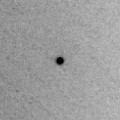
|
Now it is 16.2 mag (Sept. 13, ATLAS-MLO, Mauna Loa). It will be fading after this, and will be fainter than 18 mag in December. It is observable in good condition in the Northern Hemisphere. It is not observable in the Southern Hemisphere. Its cometary activity was observed on Mar. 26 (M. Mommert, D. Polishook, N. Moskovitz).
Date(TT) R.A. (2000) Decl. Delta r Elong. m1 Best Time(A, h)
Nov. 24 0 59.49 51 1.3 1.797 2.581 133 17.2 20:46 (180, 74)
Dec. 1 0 56.03 49 49.9 1.891 2.638 130 17.4 20:15 (180, 75)
|

|
Now it is 17.0 mag (Nov. 14, Toshihiko Ikemura, Hirohisa Sato). Fading slowly. It stays observable at 17 mag in good condition until summer in 2019.
Date(TT) R.A. (2000) Decl. Delta r Elong. m1 Best Time(A, h)
Nov. 24 11 35.81 5 42.1 10.170 9.863 69 17.2 5:14 (306, 48)
Dec. 1 11 37.79 5 40.7 10.068 9.873 75 17.2 5:19 (316, 53)
|
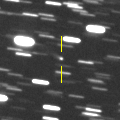
|
Now it is 17.4 mag (Nov. 10, Toshihiko Ikemura, Hirohisa Sato). It was observed at 17 mag in last winter. It will be observable in good condition at 17.5 mag also in this winter.
Date(TT) R.A. (2000) Decl. Delta r Elong. m1 Best Time(A, h)
Nov. 24 5 14.15 6 23.5 7.114 8.029 156 17.4 1:05 ( 0, 61)
Dec. 1 5 8.69 5 59.3 7.096 8.036 161 17.4 0:32 ( 0, 61)
|
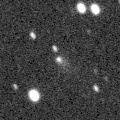
|
First return of a new periodic comet which brightened up to 16.5 mag in 2005. Now it is 17.3 mag (Nov. 15, Toshihiko Ikemura, Hirohisa Sato). It will be fading after this, and will be fainter than 18 mag in December. It locates low in the Southern Hemisphere.
Date(TT) R.A. (2000) Decl. Delta r Elong. m1 Best Time(A, h)
Nov. 24 1 48.90 26 27.3 1.260 2.172 150 17.4 21:36 ( 0, 81)
Dec. 1 1 50.73 24 58.4 1.316 2.193 144 17.5 21:10 ( 0, 80)
|
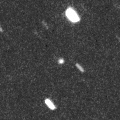
|
Now it is 17.1 mag (Oct. 13, Alexander Baransky). It was observed at 18 mag in last winter. It will be observable in good condition at 17.5 mag also in this winter.
Date(TT) R.A. (2000) Decl. Delta r Elong. m1 Best Time(A, h)
Nov. 24 7 28.30 4 4.9 2.254 2.946 126 17.5 3:18 ( 0, 59)
Dec. 1 7 27.16 3 28.2 2.204 2.962 132 17.4 2:50 ( 0, 58)
|
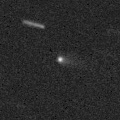
|
It brightened rapidly. Now it is 17.0 mag (Nov. 10, Toshihiko Ikemura, Hirohisa Sato). It will be fading after this, and will be fainter than 18 mag in December.
Date(TT) R.A. (2000) Decl. Delta r Elong. m1 Best Time(A, h)
Nov. 24 1 42.08 1 5.9 1.673 2.524 141 17.5 21:29 ( 0, 56)
Dec. 1 1 40.69 1 34.1 1.741 2.535 134 17.6 21:00 ( 0, 57)
|

|
Now it is 17.0 mag (Nov. 11, Toshihiko Ikemura, Hirohisa Sato). It will be fading gradually after this, and it will be fainter than 18 mag in winter. In the Northern Hemisphere, it stays observable in good condition for a long time. In the Southern Hemisphere, it will never be observable again.
Date(TT) R.A. (2000) Decl. Delta r Elong. m1 Best Time(A, h)
Nov. 24 22 44.16 70 22.7 7.436 7.876 113 17.5 18:31 (180, 55)
Dec. 1 22 48.41 69 25.2 7.480 7.904 112 17.6 18:18 (179, 56)
|
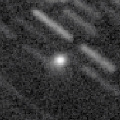
|
Now it is 18.0 mag (Nov. 10, Toshihiko Ikemura, Hirohisa Sato). It brightened up to 16 mag in 2018 spring. It stays observable in good condition until 2019 spring when the comet will be fainter than 18 mag.
Date(TT) R.A. (2000) Decl. Delta r Elong. m1 Best Time(A, h)
Nov. 24 10 48.90 4 7.5 3.527 3.482 79 17.5 5:14 (323, 53)
Dec. 1 10 52.15 5 2.2 3.453 3.525 86 17.5 5:19 (334, 57)
|
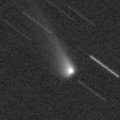
|
Now it is 16.7 mag (Nov. 14, Kunihiro Shima). Fading now. It stays observable in good condition for a long time after this in the Southern Hemisphere. It stays low in the Northern Hemisphere.
Date(TT) R.A. (2000) Decl. Delta r Elong. m1 Best Time(A, h)
Nov. 24 22 37.91 -39 48.8 5.101 5.101 84 17.6 18:25 ( 0, 15)
Dec. 1 22 35.47 -39 41.0 5.247 5.132 77 17.7 18:18 ( 4, 15)
|

|
Now it is 18.1 mag (Oct. 15, Kunihiro Shima). Although it is around the aphelion, it is observable at 17.5 mag in November, in good condition in the Northern Hemisphere. It locates very low in the Southern Hemisphere.
Date(TT) R.A. (2000) Decl. Delta r Elong. m1 Best Time(A, h)
Nov. 24 2 29.35 36 28.5 1.433 2.365 155 17.6 22:15 (180, 89)
Dec. 1 2 13.97 34 28.8 1.454 2.350 148 17.7 21:32 ( 0, 89)
|
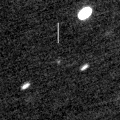
|
Now it is 17.2 mag (Nov. 14, Toshihiko Ikemura, Hirohisa Sato). It is observable at 17.5 mag until January, in good condition in the Northern Hemisphere. It locates very low in the Southern Hemisphere.
Date(TT) R.A. (2000) Decl. Delta r Elong. m1 Best Time(A, h)
Nov. 24 6 33.85 40 14.5 2.946 3.767 141 17.7 2:24 (180, 85)
Dec. 1 6 30.10 41 2.7 2.908 3.778 147 17.6 1:53 (180, 84)
|

|
Peculiar asteroid moving along a cometary orbit. Now it is 17.2 mag (Sept. 9, M. Jaeger, et al.). It is observable at 17.5 mag in good condition in November. It locates somewhat low in the Southern Hemisphere.
Date(TT) R.A. (2000) Decl. Delta r Elong. m1 Best Time(A, h)
Nov. 24 3 29.59 23 0.4 2.111 3.094 173 17.6 23:16 ( 0, 78)
Dec. 1 3 25.92 22 12.3 2.122 3.088 165 17.8 22:45 ( 0, 77)
|
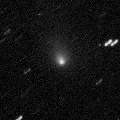
|
It brightened very rapidly up to 13.8 mag in August in 2017 (Aug. 22, Kunihiro Shima). Now it is 16.3 mag (Nov. 14, Kunihiro Shima). In the Northern Hemisphere, it stays observable in excellent condition after this. It stays extremely low in the Southern Hemisphere.
Date(TT) R.A. (2000) Decl. Delta r Elong. m1 Best Time(A, h)
Nov. 24 10 51.74 29 50.3 2.404 2.582 88 17.6 5:14 (280, 71)
Dec. 1 11 0.18 30 22.4 2.347 2.610 94 17.7 5:19 (285, 76)
|
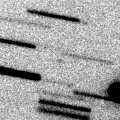
|
Now it is 18.9 mag (Nov. 14, Kunihiro Shima). It is observable at 17 mag in good condition in winter in the Northern Hemisphere. It locates very low in the Southern Hemisphere.
Date(TT) R.A. (2000) Decl. Delta r Elong. m1 Best Time(A, h)
Nov. 24 9 31.10 31 0.5 0.883 1.492 105 17.9 5:14 (341, 86)
Dec. 1 9 52.20 31 36.3 0.849 1.489 108 17.7 5:14 ( 0, 87)
|
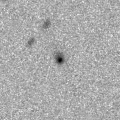
|
It brightened very rapidly. Now it is 17.0 mag (Nov. 10, Toshihiko Ikemura, Hirohisa Sato). It seems to stay bright for a while.
Date(TT) R.A. (2000) Decl. Delta r Elong. m1 Best Time(A, h)
Nov. 24 0 7.01 -7 23.4 1.119 1.797 117 17.8 19:54 ( 0, 48)
Dec. 1 0 13.94 -5 27.8 1.188 1.810 112 18.0 19:34 ( 0, 50)
|
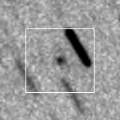
|
First return of a new periodic comet which brightened up to 16 mag in 2011. Brightening rapidly. Now it is 18.2 mag (Nov. 14, Kunihiro Shima). It is observable at 17.5 mag in good condition in winter.
Date(TT) R.A. (2000) Decl. Delta r Elong. m1 Best Time(A, h)
Nov. 24 2 43.87 16 27.8 1.542 2.500 162 17.9 22:30 ( 0, 71)
Dec. 1 2 40.16 15 22.6 1.559 2.483 153 17.8 21:59 ( 0, 70)
|

|
It was expected to be observable at 17.5 mag in good condition in winter in the Northern Hemisphere. But actually, it is so faint as 21.0 mag (Oct. 5, K. Sarneczky, et. al). It locates low in the Southern Hemisphere.
Date(TT) R.A. (2000) Decl. Delta r Elong. m1 Best Time(A, h)
Nov. 24 5 52.57 32 1.0 2.175 3.081 151 17.9 1:43 ( 0, 87)
Dec. 1 5 48.01 32 38.4 2.130 3.071 158 17.8 1:11 ( 0, 88)
|

|
Now it is 17.7 mag (Nov. 10, Toshihiko Ikemura, Hirohisa Sato). It will be fainter than 18 mag in December.
Date(TT) R.A. (2000) Decl. Delta r Elong. m1 Best Time(A, h)
Nov. 24 5 3.95 1 28.9 7.012 7.917 154 17.9 0:54 ( 0, 57)
Dec. 1 5 1.53 1 21.2 7.029 7.952 157 17.9 0:24 ( 0, 56)
|
|
![]()
 60P/Tsuchinshan 2
60P/Tsuchinshan 2 C/2015 O1 ( PanSTARRS )
C/2015 O1 ( PanSTARRS ) 123P/West-Hartley
123P/West-Hartley C/2017 B3 ( LINEAR )
C/2017 B3 ( LINEAR ) 48P/Johnson
48P/Johnson 300P/Catalina
300P/Catalina C/2017 T3 ( ATLAS )
C/2017 T3 ( ATLAS ) C/2017 S3 ( PanSTARRS )
C/2017 S3 ( PanSTARRS ) C/2018 A3 ( ATLAS )
C/2018 A3 ( ATLAS ) C/2017 T2 ( PanSTARRS )
C/2017 T2 ( PanSTARRS ) 59P/Kearns-Kwee
59P/Kearns-Kwee C/2018 A6 ( Gibbs )
C/2018 A6 ( Gibbs ) C/2016 A1 ( PanSTARRS )
C/2016 A1 ( PanSTARRS ) C/2010 U3 ( Boattini )
C/2010 U3 ( Boattini ) 171P/Spahr
171P/Spahr C/2015 V2 ( Johnson )
C/2015 V2 ( Johnson ) 65P/Gunn
65P/Gunn A/2017 U7
A/2017 U7 164P/Christensen
164P/Christensen 369P/2018 P1 ( Hill )
369P/2018 P1 ( Hill ) (3552) Don Quixote
(3552) Don Quixote C/2014 B1 ( Schwartz )
C/2014 B1 ( Schwartz ) C/2015 XY1 ( Lemmon )
C/2015 XY1 ( Lemmon ) 368P/2018 L3 ( NEAT )
368P/2018 L3 ( NEAT ) 361P/2017 S4 ( Spacewatch )
361P/2017 S4 ( Spacewatch ) 243P/NEAT
243P/NEAT C/2014 OE4 ( PanSTARRS )
C/2014 OE4 ( PanSTARRS ) C/2018 E1 ( ATLAS )
C/2018 E1 ( ATLAS ) C/2015 V1 ( PanSTARRS )
C/2015 V1 ( PanSTARRS ) (3200) Phaethon
(3200) Phaethon 159P/LONEOS
159P/LONEOS (37117) Narcissus
(37117) Narcissus 240P/NEAT
240P/NEAT 247P/LINEAR
247P/LINEAR P/2018 P3 ( PanSTARRS )
P/2018 P3 ( PanSTARRS ) 373P/2018 R2 ( Rinner )
373P/2018 R2 ( Rinner ) 232P/Hill
232P/Hill C/2011 KP36 ( Spacewatch )
C/2011 KP36 ( Spacewatch )![]()














































